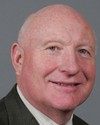It was two and a half years ago, in the spring of 2004. It's concerned with holistic conservation of the ocean, and it's triggered by the awareness of the collapsing ecosystem.
I have a background of being born and raised and living all my life in the fishing industry. My father's a DFO scientist of the type who used to do fish inspection. He was the head of the fish inspection lab in Halifax. He's now retired. Fish inspection protocols were for cold-blooded fish, which cannot carry bacterial threats as the seals can, because they're mammals.
That's one part of it. That's not the thing that caused the Grey Seal Conservation Society to form; it was ocean conservation of the ecosystem, triggered by seeing the loss of...everything. My original concern was the groundfisheries; why won't they rebuild? The starvation was a shock to me, when I found out that they were starving. My father explained this to me, and I thought it was unbelievable, but now it is actually supported by DFO analysis.
When the issue was raised here of a cod stock that diminished its tonnage when there was no fishing, the obvious negative factor had to be that the seals were eating them. That's not what the ecological analysis shows. The scientists at the Bedford Institute, Ken Frank and others, have done great studies, and they now know that it's a lack of food. When that--




